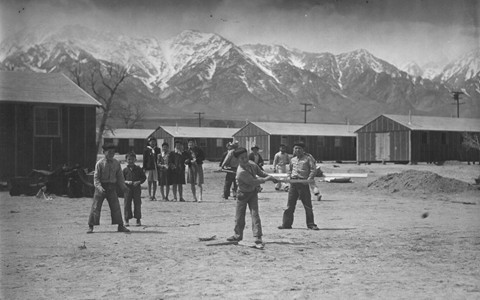
We first fell in love with the oral-history format eons ago, when a copy of Studs Terkel’s The Good War found its way into our grubby hands. Ever since, we’ve rarely passed up the opportunity to comb through typed-up question-and-answer sessions with the sorts of characters who otherwise would be excluded from the history books. And our diligence has paid off handsomely on occasion—we were able to track down the only man known to have met Herman Perry‘s half-Naga son by stumbling upon a nugget archived by the University of North Texas’s Oral History Program.
Our most recent oral-history obsession is this stellar collection of memories regarding the internment of Japanese-Americans during World War II. Strangely, we’ve been drawn more to the interviews with townsfolk and guards rather than the internees themselves—perhaps because we’re curious as to whether anyone in the Western deserts was genuinely disturbed by this mass guilt-by-association incarceration program. (Short answer: Very few had reservations at the time, but minds have changed over the decades.)
In focusing on the situation at California’s Tule Lake camp, where several violent inmate riots took place, we came across this tidbit from a local woman who worked as a clerk at the facility:
We could almost tell to the point where the trouble was by the mail that came in. The camp was set up in blocks, and maybe one block would be mailing out dozens of registered letters and, of course, with registered letters you had to declare the value of it. It was nearly all money, so we could tell, or I could tell and I think the girls that were working at the windows could tell, about where that trouble was. We had an Army man on duty all the time, so at the end of the day I would say, “There’ll be trouble in block 24,” and sure enough within twenty-four hours they had a riot in it. Those people there seemed to know it and were sending their money out. We could tell it by the difference in mailing conditions.
Don’t miss this haunting digital scrapbook kept by a Tule Lake internee. And the National Park Service’s Confinement and Ethnicity contains detailed information on all the camps, including the dreaded (and chillingly named) “Isolation Centers.”
(Photo of Japanese-American boys playing baseball at Manzanar via The Bancroft Library)


Like gas stations in rural Texas after 10 pm, comments are closed.